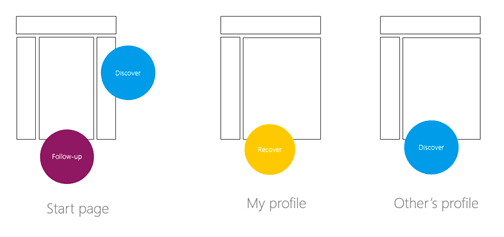Supporting End User Experiences
As mentioned in yesterday’s post, when we focus all of our time and effort on deploying technology, we tend to forget some of the basics — like delivering something that end users really want and need. Building to support the user experience and to optimize our technology deployment are not mutually exclusive, but in my twenty-six years working in technology, its fairly common to see a technical solution pursued regardless of the end user fit. The UX should never be secondary, period.
When I was out in Montreal earlier this year visiting with Benjamin Niaulin (@bniaulin) and the team at Sharegate, one of the videos we captured was a whiteboard session discussing the "The Rise of the UX" in which I walked through some of the common features of some of the most successful websites in the history of the worldwide web: You guessed it, the leading social networking sites, such as Facebook, LinkedIn, Twitter, and others.
You can check out my whiteboard session below, or read the transcript and Ben’s comments here.
I’ve incorporated some of these ideas into a few of my current presentations. In fact, I just recorded a live webinar with Asif Rehmani from @VisualSP this week, and the recording of Productivity Hacking for Team Collaboration will be available for free for a few more days before it goes into the customer catalog. In fact, I borrowed heavily from Beezy product lead Maximo Castagno who often talks about the commonalities between these successful website and how organizations need to consider these same components as they design their own user experiences. These commonalities include Discovery, Recovery, and Follow-Up capabilities.
Whether you are trying to build a basic company intranet using out-of-the-box SharePoint capabilities, or are attempting to build a system that integrates your Line of Business (LoB) applications with complex business workflows and an advanced site topology — you still need to think about and deliver an end user experience that takes into consideration Discovery, Recovery, and Follow-Up.
Discovery is all about finding or "discovering" content, people, and ideas that are new to you. Search can act as a discovery mechanism, returning results that may or may not fit what you’re looking for based on your search criteria, and the skill applied to tagging and cataloging the content. Delve is an excellent example of pure discovery, leveraging the power of the Office Graph to not only surface content based on your search criteria, but based on your profile, your network connections, and your data consumption habits. Delve has the ability to surface content you may not have even been looking for, but based on your current projects and the conversations you’ve been having with peers, the Office Graph has identified these artifacts (people, content, conversations, email) that it believes are relevant to you. Discovery is not Search. Discovery is a suggestion, an introduction, a best bet.
Recovery is all about where you’ve been. What document did I upload, and to which content library? Who did I have that discussion with yesterday, or was it last week? We are a society that can’t remember family phone number because we’re so inundated with information every day, every hour. And if you’re an information worker, its easily tenfold. We require mechanisms that timestamp and recall our activities. Recovery is all about recall, and personal productivity.
Follow-Up is the activity portion of the user experience. This is the newsfeed. People you follow, projects you’re leading, conversations you’re tracking, communities of which you are a member. Email is the most common Follow-Up mechanism, and the place from which most of us begin our day. Follow-Up is your pulse on the world.
Regardless of your system goals — intranet, extranet, project management portal, document collaboration system, or knowledgebase — if you are building an environment where you want your end users to make themselves at home, stay a while, and be productive, you’ll need to consider these points. And if you spend too much time focusing on the technology and not enough time understanding how to deliver these UX components, you’ll find success elusive. Because at the end of the day, you can have the latest technology, perfectly executed, on-time and under-budget….but if end users don’t adopt it and use it, you’ve failed.





